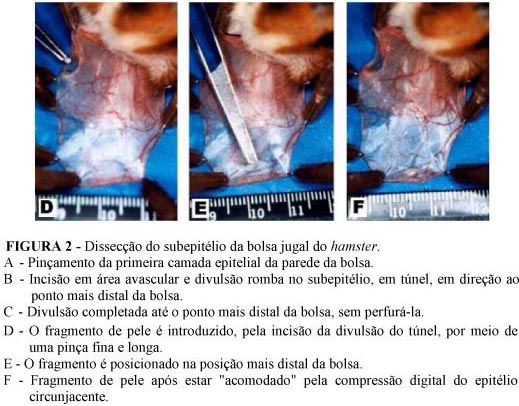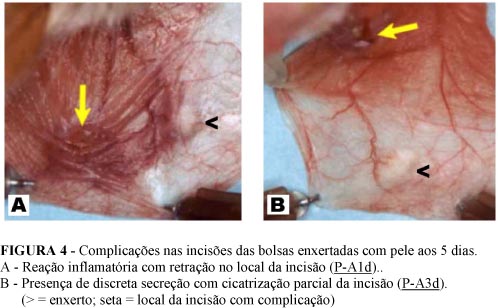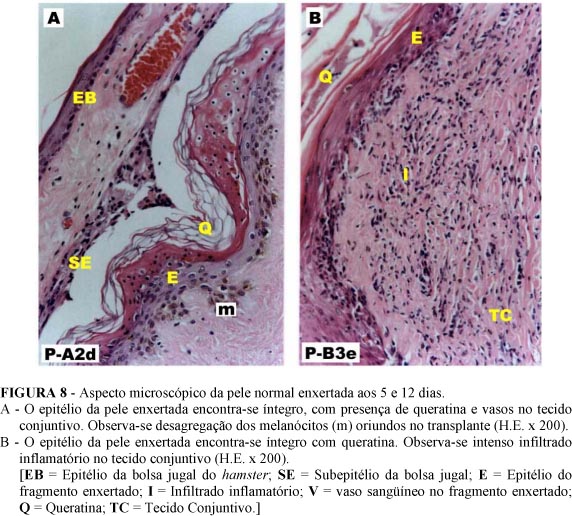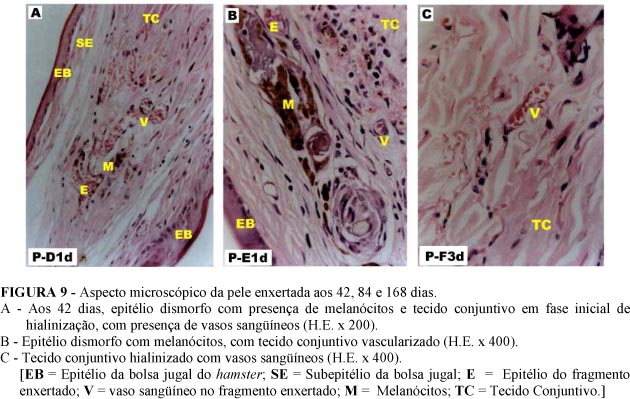PURPOSE: To describe the integration of total human skin into hamster (Mesocricetus auratus) cheek pouch. METHODS: The sample was formed by 18 male hamsters, outbred, aging between 10 and 14 weeks. Fragments of normal human skin were obtained from reduction mastoplasty of a mulatto woman patient. Each hamster was grafted into both pouches with skin fragments, in a total of 36 fragments grafted. Animals were distributed into 6 groups for examination of the grafted fragments at the days 5, 12, 21, 42, 84, and 168. One macroscopic assessment was performed by comparing the pouch containing the grafted fragment in each period with the same pouch in the immediate post surgical, following standardized photographs. In the microscopic assessment, as an integration criterion of the grafted skin fragments, the presence of blood vases within the dermis was adopted. The presence of keratin, melanocytes, cellular infiltrated, and the aspect of conjunctive tissue was also observed. RESULTS: In the macroscopic evaluation a vascular reaction in fragments up to 12 days and the presence of dark brown pigmentation up to 42 days were observed. Under microscope 80.64% of grafted fragments were integrated, including in the group of 168 days. An inflammatory cellular infiltrated was observed up to 12 days, the presence of melanocytes from 42 days and a subcutaneous cellular tissue hyalinization after 84 days were seen. CONCLUSIONS: Fragments of human skin integrate into the hamster pouch, they remain vascularized for 168 days and preserve the whole epithelium up to 21 days. The pouch sub-epithelium represents an experimental model to investigating human skin physiology ex vivo.
Mesocricetus; Transplantation; heterologous; Skin transplantation















